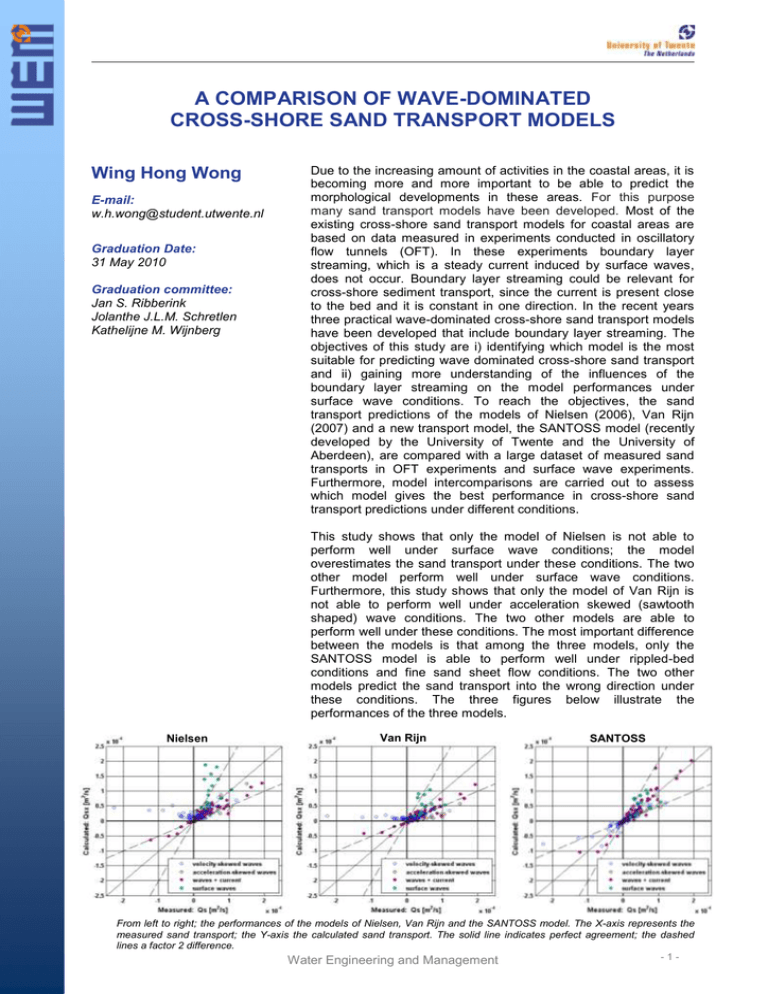WongWH
advertisement

A COMPARISON OF WAVE-DOMINATED CROSS-SHORE SAND TRANSPORT MODELS Wing Hong Wong E-mail: w.h.wong@student.utwente.nl Graduation Date: 31 May 2010 Graduation committee: Jan S. Ribberink Jolanthe J.L.M. Schretlen Kathelijne M. Wijnberg Due to the increasing amount of activities in the coastal areas, it is becoming more and more important to be able to predict the morphological developments in these areas. For this purpose many sand transport models have been developed. Most of the existing cross-shore sand transport models for coastal areas are based on data measured in experiments conducted in oscillatory flow tunnels (OFT). In these experiments boundary layer streaming, which is a steady current induced by surface waves, does not occur. Boundary layer streaming could be relevant for cross-shore sediment transport, since the current is present close to the bed and it is constant in one direction. In the recent years three practical wave-dominated cross-shore sand transport models have been developed that include boundary layer streaming. The objectives of this study are i) identifying which model is the most suitable for predicting wave dominated cross-shore sand transport and ii) gaining more understanding of the influences of the boundary layer streaming on the model performances under surface wave conditions. To reach the objectives, the sand transport predictions of the models of Nielsen (2006), Van Rijn (2007) and a new transport model, the SANTOSS model (recently developed by the University of Twente and the University of Aberdeen), are compared with a large dataset of measured sand transports in OFT experiments and surface wave experiments. Furthermore, model intercomparisons are carried out to assess which model gives the best performance in cross-shore sand transport predictions under different conditions. This study shows that only the model of Nielsen is not able to perform well under surface wave conditions; the model overestimates the sand transport under these conditions. The two other model perform well under surface wave conditions. Furthermore, this study shows that only the model of Van Rijn is not able to perform well under acceleration skewed (sawtooth shaped) wave conditions. The two other models are able to perform well under these conditions. The most important difference between the models is that among the three models, only the SANTOSS model is able to perform well under rippled-bed conditions and fine sand sheet flow conditions. The two other models predict the sand transport into the wrong direction under these conditions. The three figures below illustrate the performances of the three models. Nielsen Van Rijn SANTOSS From left to right; the performances of the models of Nielsen, Van Rijn and the SANTOSS model. The X-axis represents the measured sand transport; the Y-axis the calculated sand transport. The solid line indicates perfect agreement; the dashed lines a factor 2 difference. -1Water Engineering and Management






